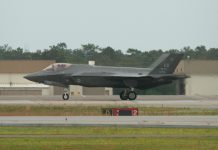
The German Navy has officially received the first of eight P-8A Poseidon maritime patrol aircraft ordered to enhance its anti-submarine capabilities. The aircraft arrived in Berlin last week and will play a critical role in preventing Russian submarines from accessing the open Atlantic undetected, according to German defense officials.
Although the Poseidon fleet will be stationed primarily at the Nordholz Air Base in northern Germany, officials noted that the aircraft will frequently operate from bases abroad to monitor activity across the North Atlantic. During the welcoming ceremony in Berlin, Defense Minister Boris Pistorius confirmed that the Poseidons will routinely fly missions from air bases in the United Kingdom, Norway, and Iceland under agreements made with those host nations.
“These arrangements enable us to extend both our reach and our operational presence,” Pistorius said, emphasizing that Germany will work closely with NATO allies in the region, including Canada.
Manufactured by Boeing, the P-8A Poseidon is an advanced U.S.-made aircraft designed for anti-submarine warfare and maritime surveillance. It is capable of detecting and engaging both underwater and surface threats and is described by the Bundeswehr as the largest warplane in Germany’s arsenal.
The aircraft is already in use by several NATO partners such as the United States, the United Kingdom, Norway, and Canada. Pistorius and Vice Admiral Axel Deertz, Deputy Chief of the German Navy, said that Germany’s adoption of the Poseidon will further strengthen interoperability with these allies. “Our deterrence capability in the High North will rely heavily on this platform,” Pistorius noted.
German crews have been training in the U.S. and with the Royal Navy for several months in preparation for the aircraft’s deployment. The Poseidon represents a major modernization step, replacing Germany’s older fleet of Lockheed P-3 Orion turboprop patrol aircraft. One of the Poseidon’s key advantages is its design: it shares the same airframe as the widely used Boeing 737, allowing for easier maintenance by civilian contractors.
According to Pistorius, the aircraft’s cutting-edge sensors, mission consoles, and onboard software mark a significant leap in capability.
The newly delivered Poseidon landed at Berlin Airport early Friday afternoon after departing from Boeing’s facility near Seattle and stopping briefly in Keflavik, Iceland. “This was more than just a delivery flight,” Vice Adm. Deertz remarked. “All systems were operational, and the tests confirmed the aircraft’s impressive capabilities.”
Germany expects to receive the remaining seven Poseidons in the coming years, with two more scheduled to arrive soon. The Bundeswehr has also retained an option to purchase four additional aircraft, which would bring the total fleet to twelve.




